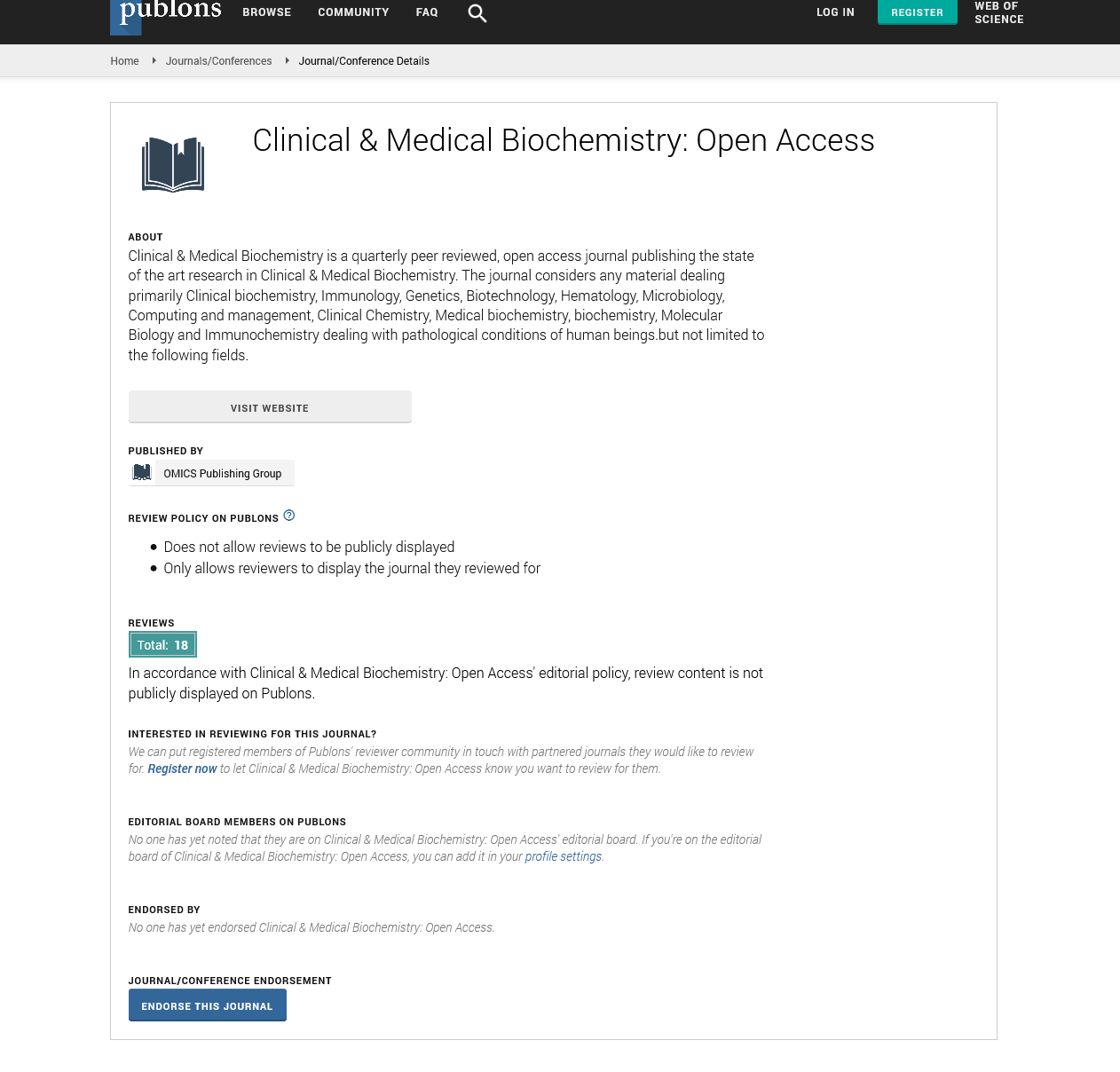Indexed In
- RefSeek
- Directory of Research Journal Indexing (DRJI)
- Hamdard University
- EBSCO A-Z
- OCLC- WorldCat
- Scholarsteer
- Publons
- Euro Pub
- Google Scholar
Useful Links
Share This Page
Journal Flyer

Open Access Journals
- Agri and Aquaculture
- Biochemistry
- Bioinformatics & Systems Biology
- Business & Management
- Chemistry
- Clinical Sciences
- Engineering
- Food & Nutrition
- General Science
- Genetics & Molecular Biology
- Immunology & Microbiology
- Medical Sciences
- Neuroscience & Psychology
- Nursing & Health Care
- Pharmaceutical Sciences
Perspective - (2022) Volume 8, Issue 6
Applications of Hepatitis A and Medications Involved in Hepa Vaccine
Schaffner Collier*Received: 17-Oct-2022, Manuscript No. CMBO-22-18987; Editor assigned: 20-Oct-2022, Pre QC No. CMBO-22-18987 (PQ); Reviewed: 09-Nov-2022, QC No. CMBO-22-18987; Revised: 18-Nov-2022, Manuscript No. CMBO-22-18987 (R); Published: 28-Nov-2022, DOI: 10.35841/2471-2663.22.8.138
Description
The hepatitis A virus, commonly known as hep A, is the cause of the widespread of liver ailment known as hepatitis A. Some people encounter minor symptoms. Some people experience more serious problems that can last for months. Typically, ingesting food or liquids contaminated with the virus faeces causes people to become unwell. Typically, the hepatitis A virus is not harmful but, almost most of people who get it recover.
When the liver becomes inflamed or damaged, its function can be damaged. Heavy drinking, toxins, some drugs, and certain medical conditions can cause hepatitis, but viruses are often to attack. The most common hepatitis viruses in the United States are hepatitis A, hepatitis B, and hepatitis C. Most of the hepatitis viruses are fecal coliform in nature. That is, when an uninfected person consumes food or water contaminated with faeces from an infected person. For family members, this can occur when an infected person gets their hands dirty while preparing food for their family members. Water-borne disease outbreaks, although rare, are usually associated with contaminated or improperly treated water.
Hepa vaccine is recommended for children aged 12-23 months, followed by a second dose at least 6 months later. Hepa can be given as early as six months of age if the baby travels to a place where hepatitis A is common. Routine immunizations are required even after the first year. Also recommended for older children (ages 2-18) who have not yet taken the vaccine. The Hepa vaccination protects all children who receive it and it may also help in pandemic control. Outbreaks occur when a disease occurs more frequently than expected in a particular area. Day care centers are common locations for hepatitis A outbreaks. Some children may become infected and have no symptoms. However, they can pass the virus on to others. Vaccination of large numbers of young children against hepatitis A can prevent community spread.
Innate immunity
A person infected with hepatitis A has immunity to HAV even after recovery. The patient cannot be infected with hepatitis A twice. A blood test that checks immunity to hepatitis A is called a hepatitis A total antibody test. People who have been infected with hepatitis A or who have been vaccinated against hepatitis A will test positive for hepatitis A antibodies for the rest of their lives. It can be prevented by immediate vaccination or administration of immune globulin. People who have been recently exposed to HAV should receive immunoglobulin or vaccine as soon as possible, but within 2 weeks of their last exposure.
A blood test for hepatitis A infection is called a hepatitis A IgM antibody test. People who are currently infected with hepatitis A show positive IgM antibodies in this test. Most people recover completely from their hepatitis A infection, but a minority, usually those with pre-existing liver disease, experience severe liver damage and can die (0.3 to 1.3%).
Conclusion
In hepatitis viruses, the narrow hepatic liver tissue may be the reason why the host range of hepatitis viruses is restricted to a relatively small number of specific host species. Possible emergence of new serotypes derived from zoonotic hosts. In conclusion, although HAV can be readily adapted for growth into conventional mammalian cell culture conditions, candidate cells of hepatitis A infection need to be further developed. In recent decades, HAV has been somewhat neglected by the viral research community due to research costs, and attention has shifted to other hepatotropic pathogens.
Citation: Collier S (2022) Applications of Hepatitis A and Medications Involved in Hepa Vaccine. Clin Med Bio Chem. 8:138.
Copyright: © 2022 Collier S. This is an open-access article distributed under the terms of the Creative Commons Attribution License, which permits unrestricted use, distribution, and reproduction in any medium, provided the original author and source are credited.

